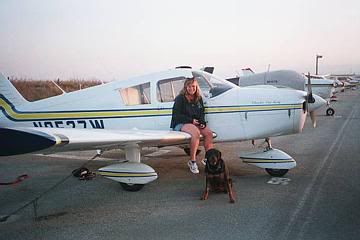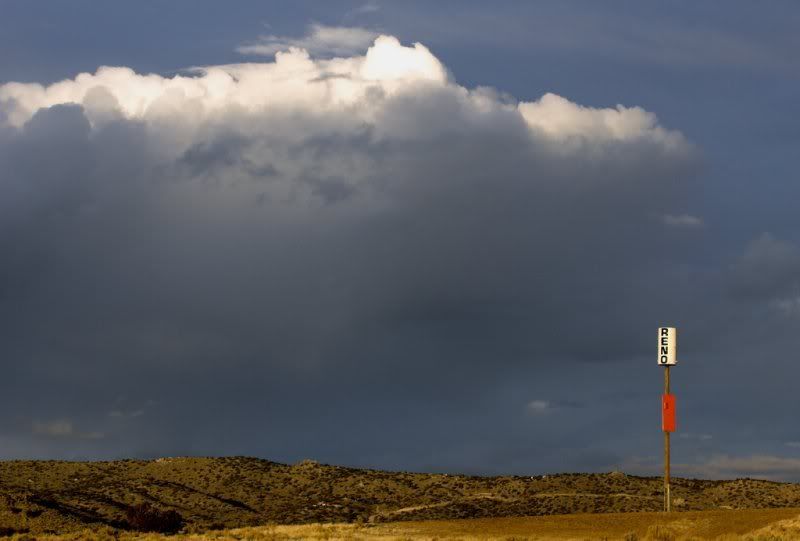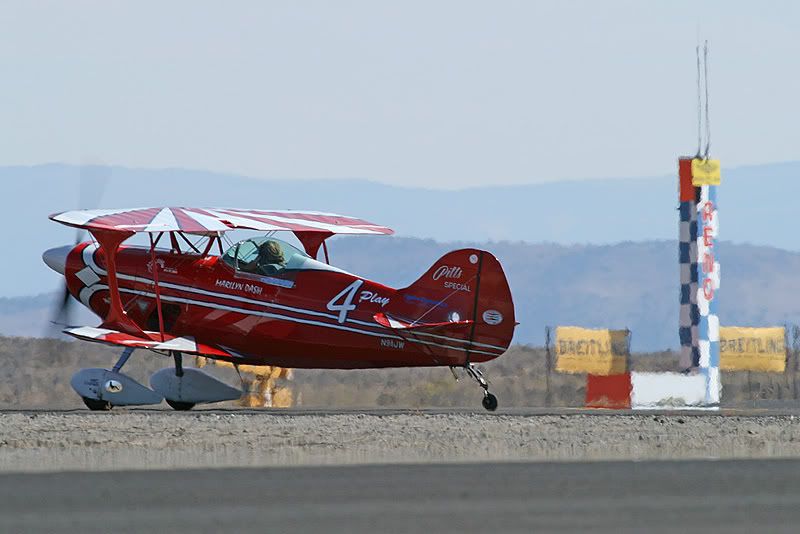At one time… every Race Pilot went to the races and thought, I want to do that! Each of us had to make some decisions and focus on the goal. And while the process has become more structured in recent years with the creation of the Pylon Racing Seminar, it’s still a process.
The beginning of Ruby Red Racing
The first time I went to the Reno Air Races, it was 1999 and I was a student pilot at Diamond Aviation at KSQL. Our journey started as two students and a CFI in a rented C172.We landed at KRNO. I remember landing next to a DC-9 on the parallel runway and thinking, we don't have this at home! We landed and caught a shuttle to 4SD (now KRTS), Reno-Stead Airport to watch the races.
Karen Morss owned Diamond at the time and her husband, David Morss was racing in three classes; Unlimited, Sport and Formula. Karen made sure we were set up with tickets and Pit Passes. We really got to see the races up close because of Karen and David and their hospitality. We spent much of the time in the pits, and the rest of the time in our seats in the grandstands.
From that first day, I was hooked and have always wanted to be a Race Pilot. But, how do you go from 40 hours in a Citabria and another 40 in a Katana to racing around pylons with the best of the best?

After earning my ticket late in 1999, I purchased my first airplane, Daisy. Daisy is a Cherokee 140/160 and has been my faithful warrior for many years. We have traveled the West Coast from Seattle to Phoenix. My beloved (late) Rottweiler, Darling Precious, would fly with me all the time.
Our first trip after buying the Cherokee was Christmas Day in 1999 flying to Santa Monica to visit my cousin.
The looks on the faces of the people at the airport when a Rottweiler and a woman (with a brand new pilot certificate) jumped out of this airplane were priceless.
In August of 2000, I was still volunteering at the Hiller Aviation Museum. They had a “RENO AIR RACE” day to meet some of the air race pilots in the area. I remember meeting a Biplane Racer who was also an Aerobatic Competitor at this event. He invited me to stop by his pit while at the races that year. And I did.

We became friends and he asked me about my flying goals. I told him that I had two … One was to fly aerobatics and the other was to race at Reno. He didn’t laugh. Which, looking back, was quite nice of him.
He was kind enough to take me flying to do some aerobatics and after about two flights told me to go to Sean D. Tucker’s School of Aerobatic Flight (Now, Tutima Flight Academy) for additional training. He stressed spin training, which should be required for all new pilots – in my opinion.
My love affair with advanced or competitive or sport flying continued (what would you call this?) I flew in my first aerobatic contest in 2001 and received a few awards and had a blast.
I was addicted.
Balancing work and my new passion has always been difficult. I work as an Independent Management Consultant specializing in Sales and Marketing Technologies. When work is plentiful, time is not. When work is sparse, money is not. You need both time to practice and money to pay for it to make your dreams come true. Or maybe, I could just win the lotto.
It took me just over a year to buy my race plane, Ruby. Wes Selvidge was an Air Show Pilot, Aerobatic Competitor and also raced in the Biplane Class at Reno for several years. He had decided to sell his Pitts Special and I was there with a check within minutes.
Now, flying a Cherokee and flying a Pitts are very different animals. I needed a parachute. I needed to figure out the helmet issue – can’t fit in the plane with a tight canopy with a standard helmet, and a regular headset falls off your head while inverted – so I devised this ingenious yet somewhat redneck kluge in the form of a chinstrap.
In June of 2003, I headed up to Reno for the Pylon Racing School. The first day is Ground School. Your Class will have delegated someone to discuss with you the operations of the class. The will cover topics such as; How do you line up to start, how do you take to the race course, how do you recover, qualify, and of course, what to do in case of an emergency.
The next two days will give you time to do your air work and then get some time on the course itself. Each class has their set off requirements similar to the Practical Test Standards that all pilots know. In the Biplane Class, for example you are required to take-off with less than a ten foot deviation, be able to roll left and right, with less than a fifty foot deviation, among other standards.
Once you pass PRS, you are now a Certified Race Pilot. You actually get a little sticker to add to your log book and a patch for your flightsuit saying you attended PRS.

Now, what to do about a crew? Where am I going to stay? How do I get my luggage for ten days to Reno in a Pitts? Who do I talk to about putting numbers on my plane? How about insurance? Sponsors?
All of these questions were answered for me by taking a look around my airport. I’m lucky enough to be at a very active airport for racing. At any one time, we have up to eight pilots competing each year. Two of them that year were F1 racers and I dropped my tools and luggage in the back of one of their trucks. My crew consisted of a 17 year old airport kid who, when focused, was a great help to me.
I came in last that first year. But I had a blast and knew I would be back. 2010 will be my seventh year as a biplane racer. Now it’s our turn.
How do YOU get started?
In aerobatic competition, you are given a “buddy” to help you with the process. We don’t have that in racing, but I’ll be your virtual “buddy” to walk you through.
First, you need to know which class you want to join. This was an easy question for me to answer, since I knew I wanted to use the same aircraft for aerobatics and for racing. Each class has officers and by-laws or rules which govern them. Getting in touch with someone from the race class is as easy as checking the Reno Air Racing website (airrace.org) or doing an internet search. For the Biplane Class, we have a Facebook page and a website to draw in new members.
The easiest way to become a race pilot is to buy a race plane. The “hired guns” are usually retired fighter pilots, test pilots and astronauts. If this does not describe your last job, you’ll probably need to buy yourself a race plane.
You will need to go to Pylon Racing Seminar for the specific class you want to join. If you do not have your race plane yet, you can take the “ground school only” option and be exposed to the process, but will not be able to be fully accredited until you pass the flying portion.
Let’s say that you bought your plane, attended and passed PRS, and are headed up to Mecca in September. You need to now think about your crew and your pit. Depending on your class and your plane, you will need some tools and do some maintenance while there. If you know me, you’ll know my Ruby is very low maintenance. But I still need to check the oil and spark plugs each day. My crew of one teenager has turned into a crew of at least five characters.
While we are not taking the airplane apart each day and rebuilding it, we do need some tools. And you will be living in that pit for a week, so some chairs, tables, cooler, radio, battery charger, etc. will be essential. And don’t forget the Crew Shirts. And a golf cart, you’ll need to get back and forth along the flight line – which is over a mile long. Do you want to walk the entire way? Nope, I’ll
need a golf cart, and decorations for the golf cart are always nice, and add a homey touch.
Not ready to be an air racer yet? You can always volunteer on someone’s crew or for NAG or RARA. This is a great way to see the races from a different angle and be part of the action.

And to answer your question…
The two most frequently asked questions I hear are “Do you fly that by yourself” and “Is that your boyfriend’s airplane”.The answers are yes and no. (He has his own airplanes.)
So, until next time, fly low, fly fast, turn left and get involved.
Marilyn Dash